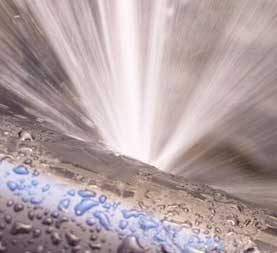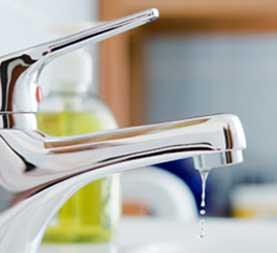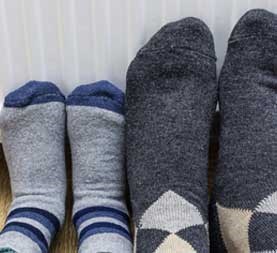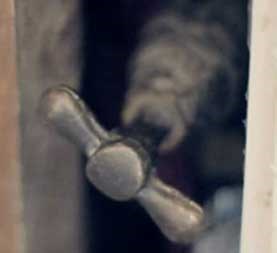Prepare your home for winter
Winter has arrived. Nobody wants the unexpected cost or inconvenience of a leak or burst at this time of year. To make sure your home and family are safe and warm during the cold weather, we’ve collected some tips on how to get your home winter ready.
Ten tips to winter-ready your home

1. Insulate your tank and pipes
If your water tank or pipes get too cold, the water inside can freeze. As well as the hassle of stopping your water supply, frozen pipes can burst and create leaks that may damage your home or possessions.
Protect your pipes by surrounding them with lagging – a cheap, foam tubing. It's easy and requires no special DIY tools. Make sure there are no gaps at bends, valves or fitting. You can also insulate your water tank.
Pay special attention to water tanks and pipes in unheated areas like loft spaces and garages, and check insulation in any property likely to be unoccupied for long periods.
If you notice a frozen tap or pipe at home, follow these steps:
- Turn off the water supply at the stop tap straight away.
- Keep your boiler or immersion heater switched off.
- Check to see if the pipe has burst (if it has, follow the advice on this page for 'If a pipe bursts').
- Open the nearest tap. Starting at the end closest to the tap, gently heat frozen sections of pipe with a hot cloth, hot water bottles or a towel soaked in hot water.
- Never use a naked flame, hair-dryer or blowtorch to thaw the pipe – it's dangerous and can cause more damage.
- Don’t leave taps dripping or running as the water may not drain down the plughole if the pipe below is frozen.
2. Find your stop tap
Your stop tap allows you to turn off your home’s water in an emergency, such as a burst pipe. It’s usually found under the sink or stairs. Find your stop tap and check it’s working, so you know what to do in a crisis.

3. Leave your heating on low
You may have holiday plans or be visiting loved ones during the festive season. If you do go away, leaving your heating on low helps protect your pipes from freezing.
Either turn your heating to a low level or schedule it to switch on for an hour in the morning and afternoon while you’re gone. Some systems have a built-in frost setting for this purpose. You could also ask a friend or neighbour to check the property regularly.
If a property is going to be unoccupied for long periods, turn off the water at the stop tap and consider draining down the system so there is no water left in the pipes.

4. Service your boiler
During the colder months, your boiler has to work harder. That’s why boilers often break in the winter. Remember to service your boiler regularly so it keeps running smoothly. Otherwise, you could face a cold home and a big repair bill, which is the last thing you need at this time of year.
You may also wish to check whether your insurance covers winter emergencies, just in case.

5. Bleed your radiators
If your radiators have air trapped inside, they can take longer to heat your home. As well as taking longer to get cosy, this wastes energy which could increase your bills.
Bleeding your radiators lets the air out, so they’re more efficient. Check whether your radiators are hot at the bottom but cool at the top. If so, it may be a sign they need bleeding.
Bleeding your radiators is simple. You just need a radiator key, which you can buy cheaply from a DIY store. Use the key to gently open the valve at the top of the radiator. You’ll hear the air escape. As soon as a drop of water comes out, twist the valve shut and you’re done.

6. Fix dripping taps
If you have a dripping tap, your pipes have more risk of freezing. After all, even a dribble can freeze inside. Fortunately, you can usually fix a dripping tap simply and cheaply by changing the washer.

7. Clear your drains and gutters
Leaves and muck can block your gutters and drains, stopping water flowing. Water that has nowhere else to go may build up and leak into your roof and walls. Or it may freeze and damage your property. Clear your drains and gutters to avoid costly repairs.
8. Disconnect your hose
If water is left in your hosepipe, it can freeze and split the hose – or force its way back into your pipes and cause leaks there. Disconnect your hosepipe and drain it. For extra security, you can pop an insulating bag over any external taps when they’re not in use.

9. Insulate your home
If heat escapes from your home, your heating has to work harder – which could increase your energy bill. A house loses a quarter of its heat through the roof, so make sure your loft is insulated properly. You can also keep heat in by shutting doors to unheated parts of the property, using draught-excluders and drawing your curtains. As well as the potential savings, your home will be cosier too!
10. Request individual support
If you’ve got individual needs that mean you’re concerned about the cold weather, you could apply to be added to our priority services register. This is a confidential register for customers with individual needs, so our staff know how best to support you – and who to prioritise in an emergency, such as a supply interruption.
These tips will help to prepare your home for winter. However, if you're concerned how you'd cope during an emergency, you could also keep a separate supply of drinking water in the house just in case.


